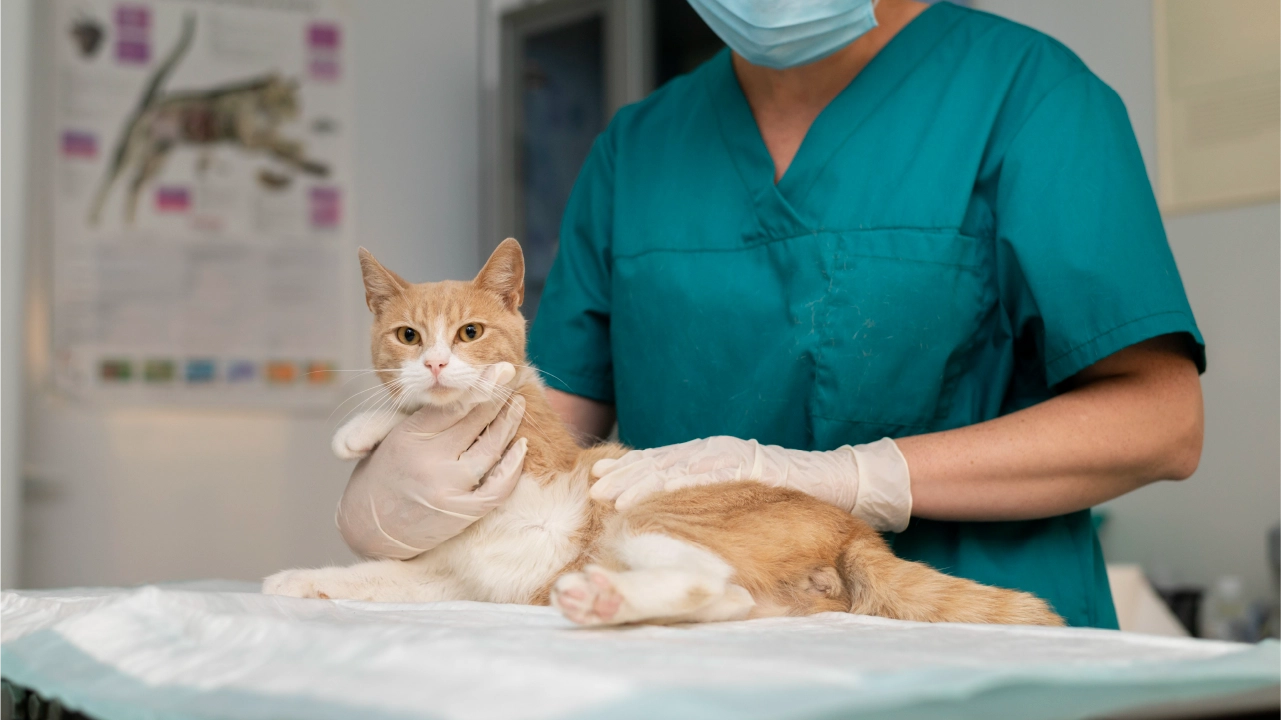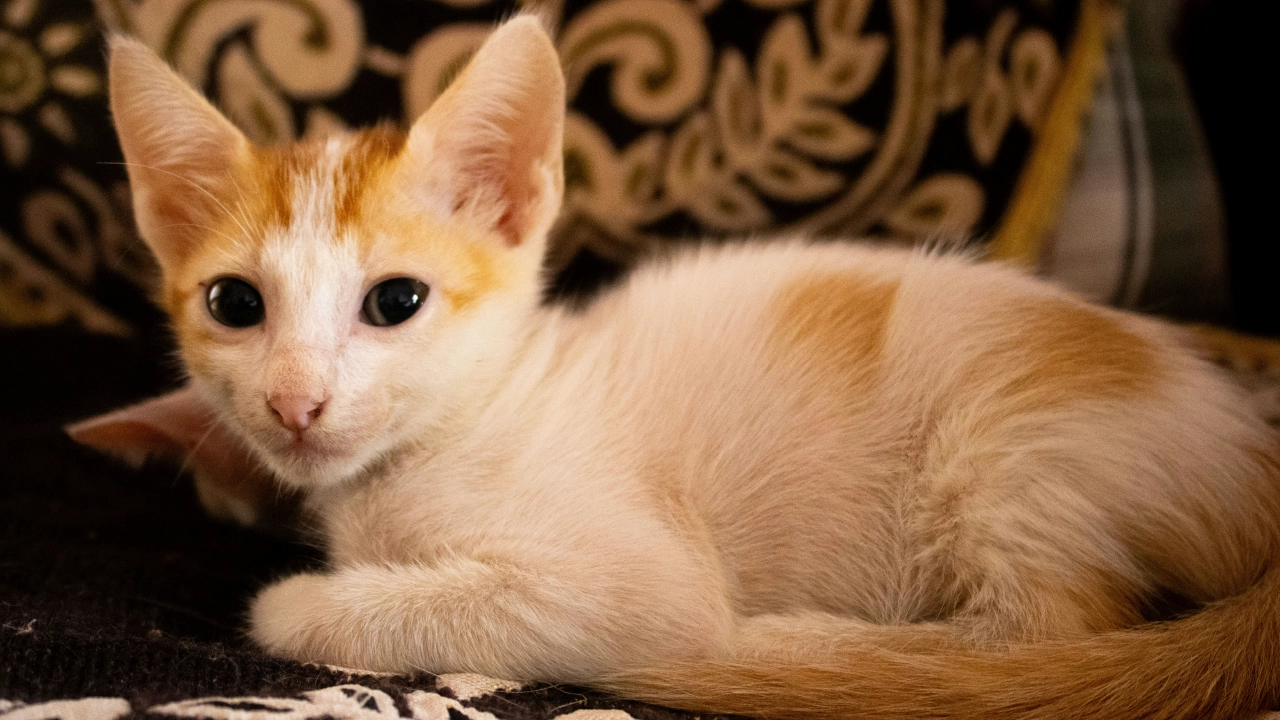Fleas on kittens can be tough to handle, but quick action is key to bringing them the comfort they need. Here’s how!
How to Get Rid of Fleas on Kittens
Bringing a new kitten into your home is like opening a tiny, fluffy bundle of joy. Those inquisitive eyes, the gentle rub against your leg—a heart-melting moment that fills your space with love and warmth. It’s your responsibility to keep them safe and healthy, ensuring your little kitty isn’t carrying any unwelcome guests like fleas! Fleas on kittens are a serious issue, and you must act quickly to eliminate them.
When I first brought my furry baby home, I had no idea that fleas could be a problem for cats. It never crossed my mind that they might be at risk too. My only solution was to consult the vet, and I did it right away. That’s when I learned the real impact of fleas on kittens and cats. If left untreated, these tiny parasites can cause discomfort like skin issues and infections—even spread diseases to both our furry friends and us!

But don’t worry—this doesn’t mean the end of your precious cuddle time! With a few tried-and-true steps, you can say goodbye to those unwelcome guests and get back to cozy snuggles with your little one. In this article, I’m sharing all the details you need to get rid of cat fleas to improve your furry baby’s health.
What are the Risks of Fleas on Kittens
Ctenocephalides felis, the common cat flea, is a real nuisance affecting cats worldwide. These pesky critters can invade your home, turning life with your furry baby into a frustrating experience.
I was scared when I first spotted fleas on my baby’s fur. I had no idea what they were, and the thought of those critters made me anxious. Determined to find the best treatment, I consulted my vet and learned that flea treatments can be a double-edged sword, especially for kittens, if not done by an experienced hand. But effective flea control is essential for a comfortable life for your baby.

One thing to remember: fleas on adult cats are relatively easier to get rid of, but it can be tricky for kittens because many commercial products used for these treatments are unsafe.
The toxicity of flea treatment products can arise anywhere from 1 to 12 hours after application, depending on the ingredients and dosage your cat is exposed to. Specifically, these products may contain organophosphates (chemicals found in garden insecticides). Symptoms of toxicity include:
- Vomiting
- Small pupils
- Diarrhea
- Drooling
- Weakness
- Difficulty breathing
- Muscle tremors
Another chemical, Permethrin, found in flea treatments for dogs, is very toxic to adult cats and lethal to kittens. Its symptoms include:
- Seizures
- Twitching
- Excessive salivation
If you notice any signs of toxicity, take quick action. First, bathe your kitten in lukewarm water and use mild dish soap to remove the product. Then, call your vet or local animal hospital for further advice.
Safest Treatment for Fleas on Kittens

The safest flea treatments for kittens are those prescribed by your vet. Depending on the age and weight of your furry baby, these options may include:
- Natural Remedies
- Prescribed Medications
- Commercial Products
Always consult a vet for the best flea treatment solution for kittens.
How to Check Your Kitten for Fleas
Fleas are tiny—dark brown and about one-eighth of an inch long—so check your kitten’s fur regularly. A flea comb, which you can find in most pet stores, can help you check for fleas on kittens.
When I first started checking my furry baby for fleas, I discovered that this flea comb is very handy. Its narrow teeth are perfect for catching any live fleas or flea eggs hiding in the fur. Without the comb, I might’ve missed them altogether.
You should also check for tiny black specks called ‘flea dirt’ (flea feces) in your kitten’s fur. At first, I wasn’t sure if it was just regular dust, but my vet suggested a trick. You can try this too:
- Flick a few specks onto a clean, damp white paper towel.
- If they turn red or leave a reddish stain, it’s flea dirt.
5 Tips You Must Not Ignore When Treating Fleas on Kittens

Always ensure that all pets in your home are treated to protect your kitten from fleas. Control fleas in your home and surrounding environment; washing bedding in hot, soapy water can help reduce flea transmission.
When removing fleas from your kitten, remember these extra steps:
- Avoid Permethrin Products: Permethrin is highly toxic to cats. Consult your vet for safer alternatives.
- Never Use Essential Oils: Cats struggle to process the compounds in essential oils, making them unsafe, so it’s best to avoid them altogether.
- Use Vet-Approved Treatments: Choose treatments that are safe for kittens.
- Try Natural Methods: A flea comb or a warm bath can help remove fleas from your kitten.
- Start Topical Treatments After a Certain Age: Begin using topical treatments only after your kitten reaches 8-10 weeks old and weighs over 1.5-2 pounds.
Seeing fleas on kittens can be tough and feel overwhelming, but keeping them safe is part of our role as pet parents. Staying alert, choosing safe flea treatments, and keeping their space clean are great places to start. And don’t forget, a quick visit to the vet can make all the difference in understanding what your kitten needs. With a bit of care and these proven methods, you’ll soon be back to enjoying those precious, flea-free snuggles with your little one.


